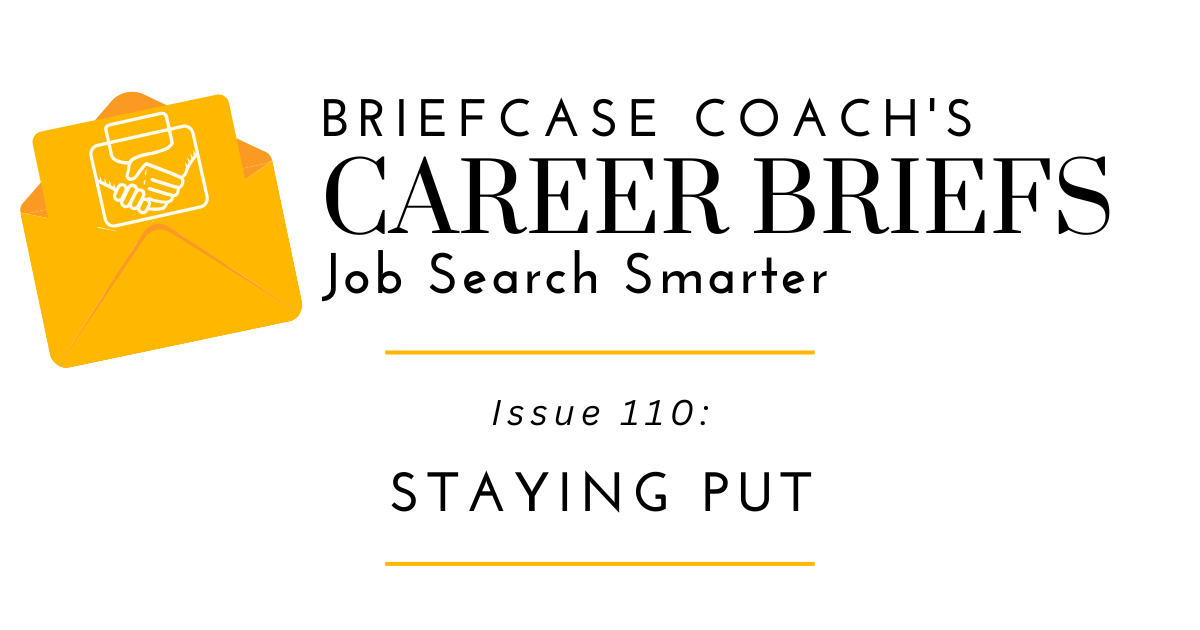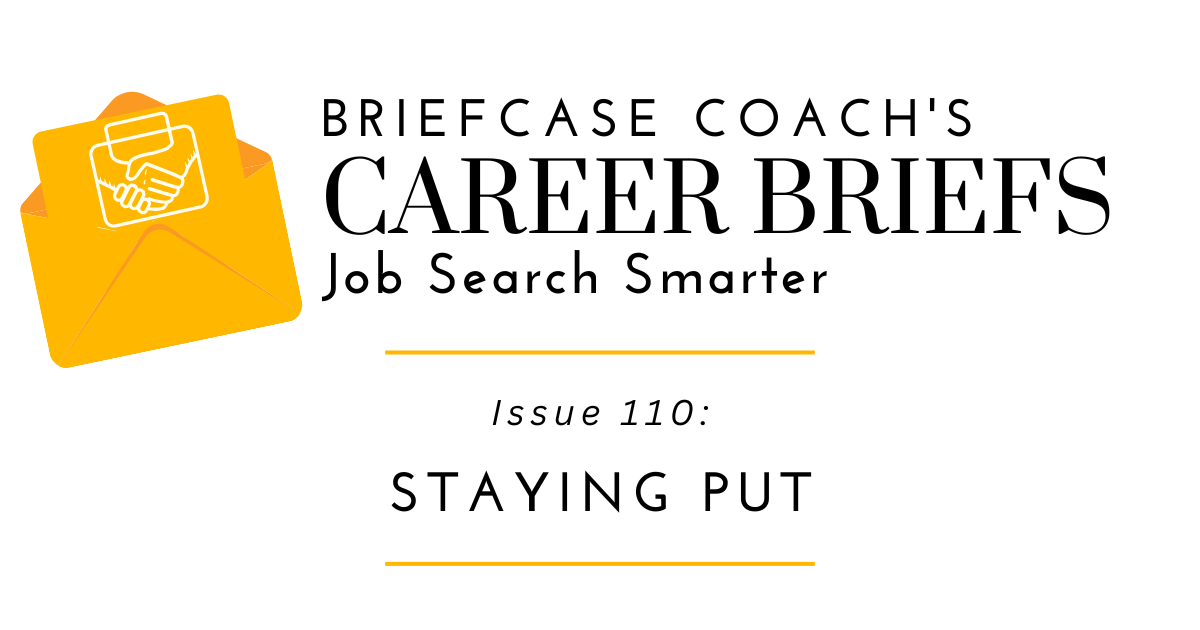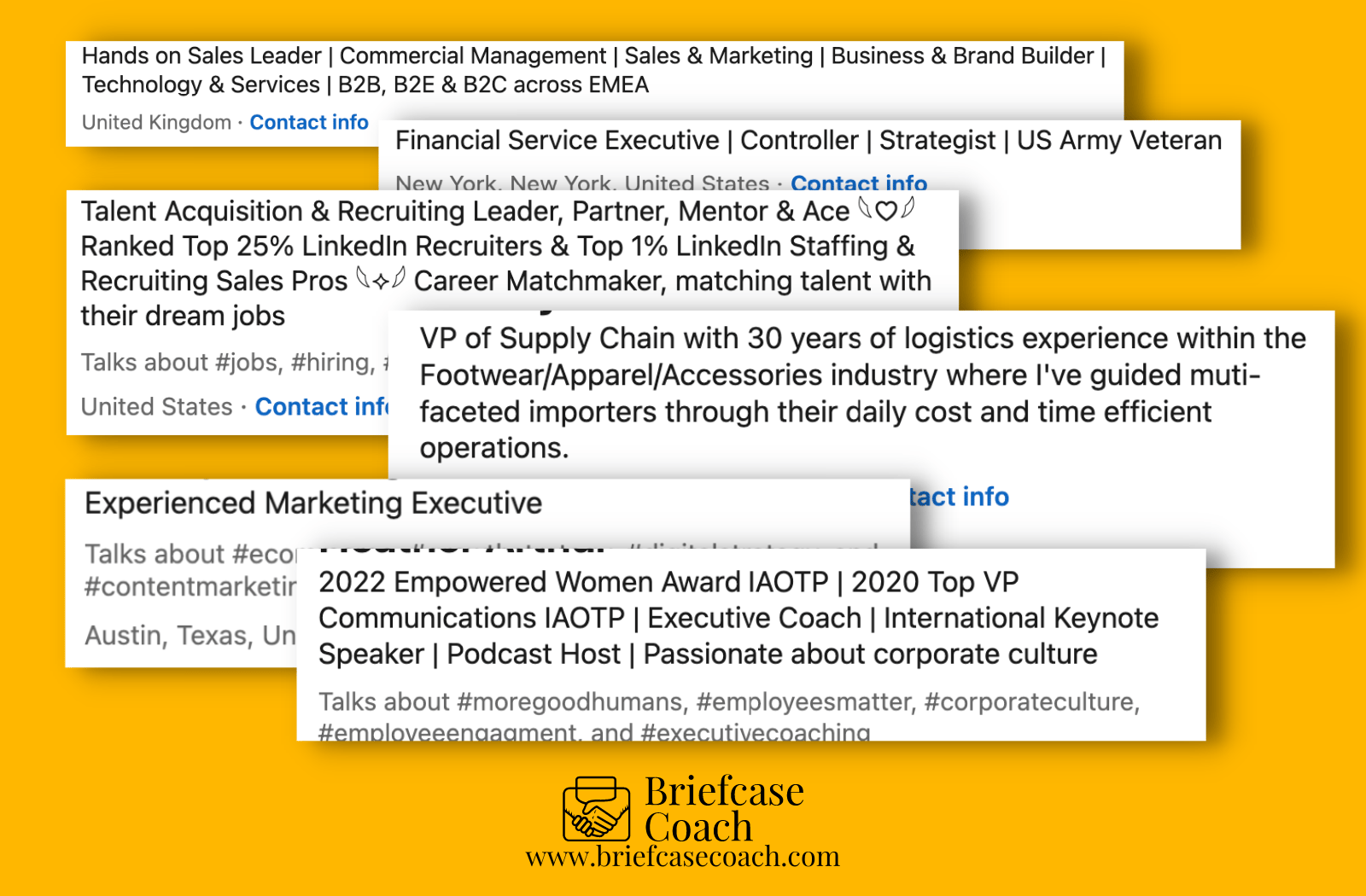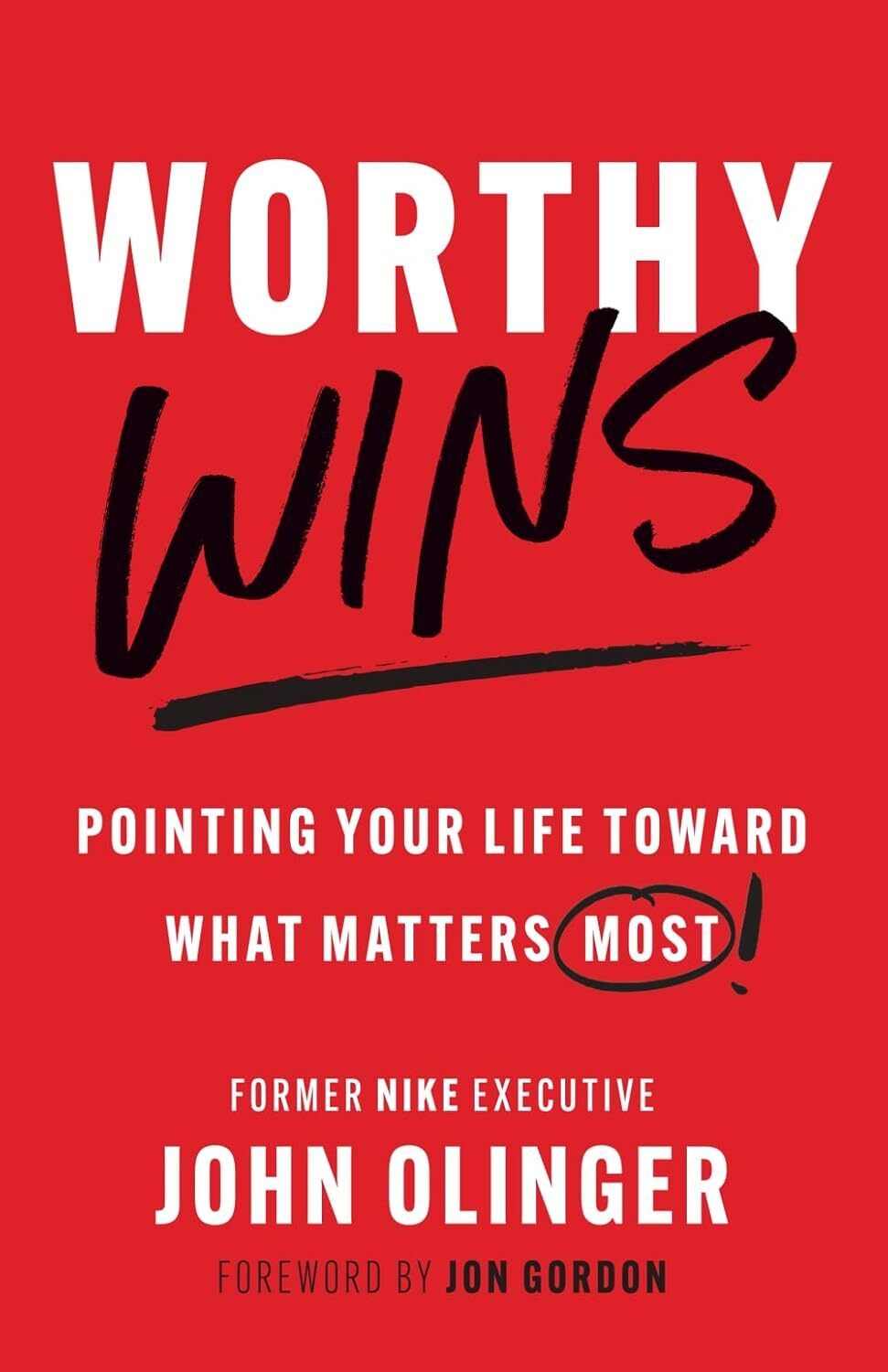- Briefcase Coach's Career Briefs: Job Search Newsletter
- Posts
- Career Briefs: Staying Put, Staying Engaged, and Standing Out
Career Briefs: Staying Put, Staying Engaged, and Standing Out
In this edition: workers clinging to stability in uncertain times, strategies to boost engagement and workplace happiness, and how to leverage experience to overcome the “overqualified” label—plus much more.


Dear Reader:
My kids went back to school last week, and I’m feeling a mix of emotions—relief that we’re back to a regular routine and a little sadness knowing they’re already a whole grade older.
For us, back-to-school season doesn’t just mean new teachers and fresh supplies—it also means diving back into ALL the activities. Our family calendar fills up quickly, and managing the chaos becomes a balancing act worthy of Olympic status.
One thing that has saved my sanity? Meal planning.
In my pre-planning days, I was the mom sitting in the Harris Teeter parking lot, frantically scrolling for dinner ideas and hoping I didn’t forget half the ingredients. Spoiler: I usually did. Not only did it cost me extra trips (and extra dollars), it made an already busy week feel even more overwhelming.
Now, I take a structured approach. I keep a master spreadsheet of meals my family loves, create a weekly menu, and order everything through my grocery store app—always on the same day each week. This simple system saves me time, money, and most importantly, my mental bandwidth.
The same principle applies to job searching.
Just like meal planning, a little structure can go a long way. One of the best tools you can create for yourself is a target company list—a running list of at least 20 organizations where you’d love to work. This becomes the foundation of your job search, keeping you focused and intentional instead of reactive and scattered.
From there, treat your list like a job search CRM: track who you’ve reached out to, conversations you’ve had with decision-makers, and roles you’ve applied for. Over time, this structured approach helps you stay consistent, see progress, and uncover opportunities you might have missed otherwise.
Whether it’s dinner or your dream job, having a plan makes all the difference.

Ps. What do you like reading in the Briefs? We are thinking about our content strategy and want to make sure our newsletter is one you look forward to opening. I genuinely would love to hear your feedback (good and bad!).
In This Issue
From Job Hopping to Job Hugging: Why Workers Are Staying Put
The age of rapid job hopping is giving way to what Korn Ferry calls “job hugging,” a growing trend in which employees, particularly Gen Z, are choosing to stay put in their current roles rather than chase new opportunities. Economic uncertainty, widespread layoffs, slowing job growth, inflation, and the disruptive impact of AI have all contributed to a collective hesitation to take risks in the job market. Confidence in external opportunities has fallen to its lowest levels in years, pushing workers to value stability over mobility.
While “job hugging” may look like a sign of stability to employers, Lorna Erickson, Hiring Strategist and Co-Founder of Expert Interviewers, highlights that it’s often less about loyalty and more about survival. “Nobody “hugs” their job because they’re in love with it. They hug it because rent’s due, health insurance is tied to it, or the job market feels like quicksand,” she explains.
In that light, job hugging isn’t a victory for retention but rather it’s a warning signal. When markets eventually rebound, the employees holding on out of necessity may be the first to leave unless companies invest now in creating environments where people want to stay, not just need to.
Read more here: ‘Job hugging’ is the newest career trend: Here’s what it means—and why Gen Z is into it.
The Engagement Crisis That Everyone Should Be Talking About
Workplace wellbeing is slipping at a dramatic pace, according to Gallup’s 2025 survey that shows engagement has plunged with only 21% of employees and 27% of managers being fully engaged, while two-thirds describe themselves as “suffering.” Managers, tasked with driving transformation in an AI-disrupted economy, are among the hardest hit, often undertrained and overwhelmed, while broader forces (layoffs, inflation, political polarization, and social disconnection) are fueling widespread fear and insecurity.
Josh Bersin, Global Industry Analyst and Founder of the Josh Bersin Company, highlights that companies endure when they invest in people as their greatest asset, including prioritizing development, fair and transparent pay, and opportunities for growth. Purpose and accountability must be balanced, with leaders fostering open dialogue rather than avoiding difficult conversations.
Organizations focusing on citizenship, belonging, and kindness outperform competitors over time, proving that long-term success comes from caring for employees, not just profits.
Read more here: Employee Engagement and Happiness Crisis. What Should We Do?
Mastering the LinkedIn Headline: How to Stand Out in 220 Characters
In today’s hyper-connected professional world, your LinkedIn headline can be the difference between being noticed and being overlooked. There is an art of crafting a LinkedIn headline that does more than just state a job title and I wrote an article explaining just how to do it.

When writing your LinkedIn headline, I always tell people to treat it like a first impression. It’s the first thing others see and can determine whether they explore your profile further. You should go beyond just your job title and use the headline to showcase your unique skills, achievements, and the value you bring. Focus on clarity, relevant keywords, and even a subtle call-to-action to engage your audience. Your headline should evolve as your career does, but stay authentic and memorable. Templates can help, but customizing your headline so it truly reflects who you are and what you offer can really help you to stand out.
Read more here: Your LinkedIn Headline: How to Write a Winning One.
How to Make Too Much Experience Work for You
Being labeled “overqualified” rarely reflects a candidate’s true abilities but instead often signals unspoken concerns from employers. They may fear that a highly skilled applicant will quickly leave for a more fitting opportunity, grow dissatisfied with routine responsibilities, demand a salary beyond the role’s budget, or prove challenging to manage. Perceived limitations in career growth or subtle age biases can also shape this perception.

Addressing these concerns requires clearly articulating how the position aligns with long-term goals, expressing genuine enthusiasm for the role and the organization, and establishing reasonable salary expectations. Highlighting how additional skills and experience can drive organizational success reinforces value, while cultivating professional connections through networking ensures evaluations are based on merit rather than assumptions about being “overqualified.” Ultimately, by proactively addressing employer concerns and demonstrating both commitment and value, candidates can turn the “overqualified” label from a potential barrier into a strategic advantage that opens doors rather than closes them.
Read more here: What Employers Really Mean When They Say You’re Overqualified (And What You Can Do About It).
U.S. Labor Market Shifts in August
The U.S. labor market is experiencing notable shifts as July’s moderate job growth and a 4.2% unemployment rate coincide with planned workforce adjustments. This month, 114 companies across industries including technology, retail, healthcare, finance, and logistics have submitted WARN notices, collectively affecting thousands of employees. Companies, such as Microsoft, CVS Health, Target, Amazon Fresh, and McDonald’s, are among those making staffing changes. While some adjustments are part of normal business realignment and evolving market demands, they reflect broader economic factors such as rising costs, tariffs, and shifting consumer behavior, highlighting the ongoing need for workforce adaptability.
Read more here: As the July jobs report paints a grim picture, 114 companies plan layoffs in August - is yours on the list?
Career Briefs Book Club Pick: Worthy Wins!

My latest captivating read was John Olinger’s Worthy Wins, and I can’t recommend it enough. John is a truly remarkable human, and in this book, he shares wisdom “to help readers win in the places that matter most.”
After spending a decade as a Brand and Digital Marketing leader for Nike and Jordan Brand, John now works as a strategic consultant, executive coach, and keynote speaker. Drawing on both biblical wisdom and corporate battlefield experience, he offers readers a framework for achieving victories that truly last, uncovering their personal definition of success, focusing on the wins that deserve their time and energy, pursuing a meaningful life story, and navigating the tensions that can derail what matters most.
It’s an insightful and remarkable book. I am giving away a FREE signed copy to a Briefs reader!!! If you’re interested in winning the signed copy, send me an email and I’ll randomly pick a winner. (Must live in North America)
Salary Cuts as Career Strategy
Changing careers can sometimes require a temporary salary reduction, but this doesn’t have to be a setback. Nick Corcodilos, Host of Ask The Headhunter, highlights that a short-term cut should be viewed as an investment in long-term career growth, especially when gaining experience and skills in a new field. Think of it like climbing the wrong branch of a tree: you may need to step down to move in the right direction and start ascending again in a more rewarding path. To start:
Evaluate long-term value: Consider how the role positions you for growth, skill-building, and future promotions.
Discuss growth and raises: Clarify with your new employer how quickly performance will translate into raises or promotions.
Frame the cut strategically: Position it as an intentional investment in your career pivot rather than a loss.
Negotiate what you can: While a higher salary may be difficult without experience or credentials, explore perks, professional development support, or performance-based bonuses.
Monitor career ROI: Periodically assess whether the new role is delivering the intended skills, opportunities, and progress toward your goals.
Overall, a temporary salary cut can be worthwhile if it enables you to pivot to a career aligned with your long-term ambitions and accelerates your future earning potential.
Read more here: Taking a salary cut to change careers.
The Future of Benefits
The old assumptions about employee needs no longer hold. Employees span multiple generations, life stages, and career paths, creating unprecedented diversity in expectations for benefits, support, and flexibility. To remain competitive in attracting and retaining top talent, organizations must rethink how they design and deliver employee experiences.
Flexible benefits remain rare: Only 15% of U.S. workers have access to cafeteria-style or customizable plans, leaving most employees with packages that don’t reflect real needs.
Personalization drives engagement: Buffet-style, modular benefits, from caregiving and fertility support to phased retirement and wellness, improve satisfaction, retention, and productivity.
AI as an enabler: Artificial intelligence allows HR teams to tailor onboarding, training, and benefits at scale, delivering personalized experiences for employees across life stages.
Competitive advantage: Organizations that adopt AI-enabled, flexible benefits position themselves to attract, retain, and reengage talent more effectively than peers relying on traditional models.
In short, the future of workforce engagement depends on personalization and adaptability. Companies that embrace AI-enabled, flexible benefits can meet employees where they are, respond to evolving needs, and turn benefits from a static offering into a strategic lever for retention, productivity, and long-term organizational success.
How Can I Help? |
|---|
Do you know someone who is job searching? 35%. That’s the number of clients referred to us by previous clients. We view referrals as the highest compliment that we can receive. As a token of our appreciation, we offer referral gifts ranging from Ember mugs to Jeni’s ice cream boxes. |
Is your company people-focused? Consider sharing Briefcase Coach with your HR leadership. We are a great “white-glove” boutique option for executive outplacement. |
Need to make updates to your professional documents or prepare for a high-stakes interview? Briefcase Coach has an experienced team ready to help high performers wanting to work one-on-one with an executive career strategist. |
Reply